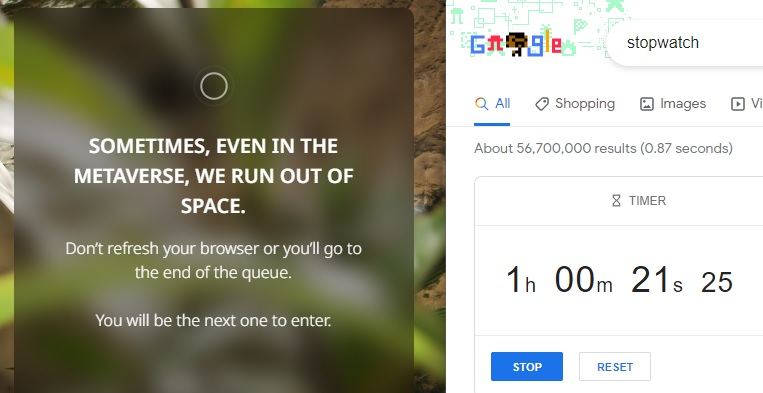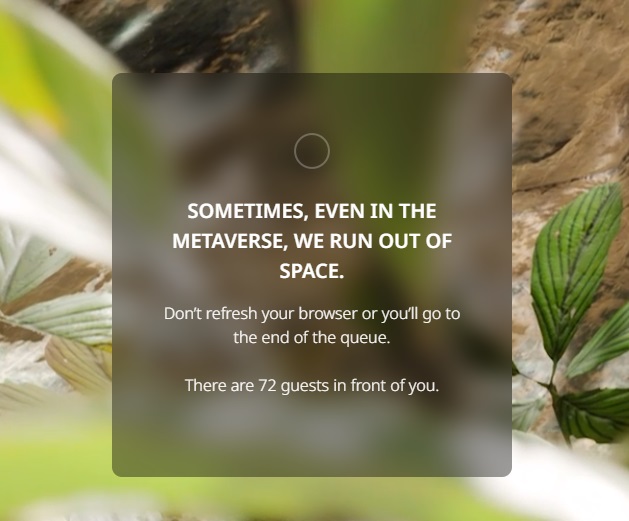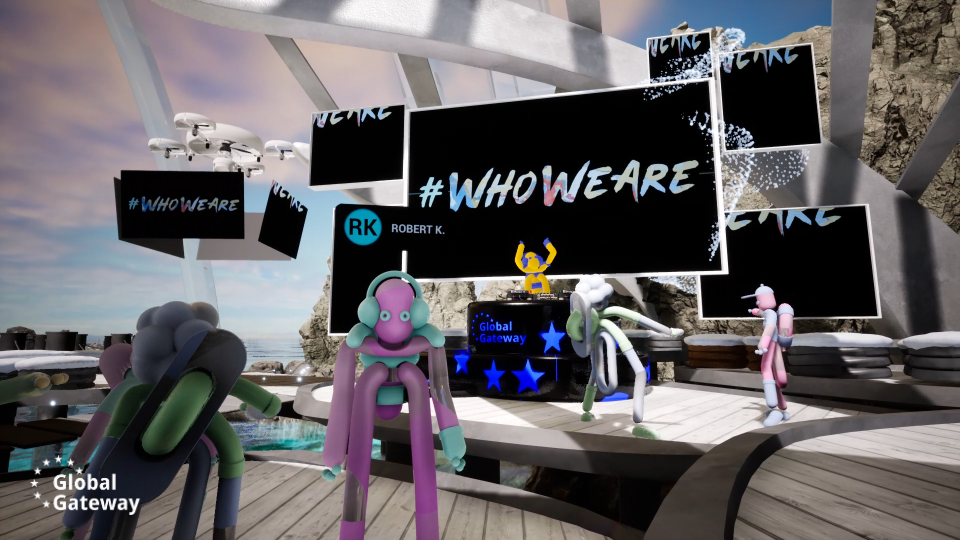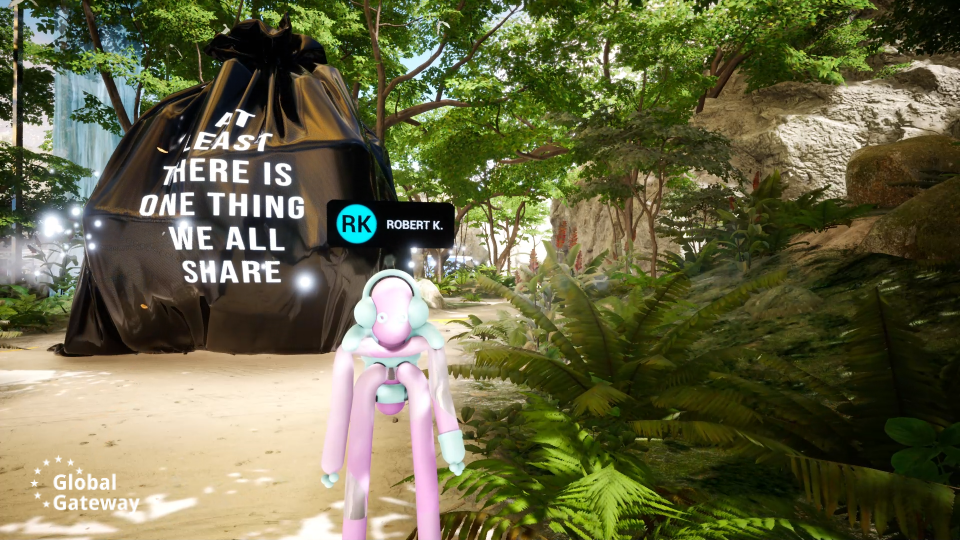The European Union (EU) blew more than $400,000 on a metaverse party almost nobody came to, now users are lining up to visit the scene of the so-called disaster.
The story first came to light on Tuesday when one attendee at the “gala” event reported that he was one of only six people who showed up. By the end of the week, a host of mainstream media outlets picked up and reported on the news, barely bothering to hide their glee at the scale of the disaster.
Success through failure
The initial launch of the metaverse appears to have been nothing short of catastrophic, but with widespread publicity in the press, the EU metaverse is now, perhaps ironically, finding an audience.

On Friday morning (UST time) the virtual event was full to capacity. Users were forced to get in a virtual line just to attend. The website declared:
“Sometimes, even in the metaverse, we run out of space.”
With the line at 29 prospective guests, waiting times for admission exceeded 1 hour. At the time of press, that line had grown to 74 suggesting that wait times were exceeding the 2-hour mark.
That is a remarkable turnaround for an event that only attracted 6 people on its gala day.

Why does this need a metaverse?
The EU metaverse is the brainchild of the European Commission’s foreign aid department and Global Gateway initiative, tasked with building awareness and raising its profile.
The EU’s Global Gateway initiative is a €300 million ($315M) foreign aid program intended to rival China’s Belt and Road initiative. The commission plans to redistribute €300 million ($315M) foreign aid to global partners, with half of the money earmarked for nations in Africa.
The metaverse uses only a tiny fraction of that budget to raise awareness of the program at home and overseas. With scores of headlines and countless column inches now dedicated to the program, that aim appears met.
MetaNews attends EU-party
With the EU-metaverse receiving relentless mockery, this MetaNews reporter went to experience the event firsthand. What was it all about, and was it really as bad as the mainstream press seemed to suggest?
The answer to that question is both yes and no.
Upon first arrival, my metaverse avatar is dropped outside a building. Entering that building starts a video that is part of the EU’s social awareness campaign.

This is a fairly dry way to begin any so-called “fun” or engaging experience, and so, I move on. Deeper inside the building are some artworks with expository narration. I am reminded of the early days of the internet when people created personal webpages and only later started to think of things to fill them with.
Anyone can go to and navigate and explore the environment with a browser, a mouse, and a keyboard. That’s not to say that navigation is especially easy. In fact, it’s a bit of a pain trying to guide the avatar around the environment as the site stalls and lags. More than a few times during the visit I find my avatar hopelessly colliding into a wall.
So far, the experience is akin to a 3D Geocities page crossed with a European social justice museum. It’s strange and disconnected and oddly fascinating.
This rave makes no sense
Traveling outside the building leads to the rave arena. This is one of the strangest locations in the environment. There is a DJ booth and a dancefloor consisting of multiple interwoven levels. Standing over the location is a giant asexual red statue. The statue is posed as a shot-putter, but in place of the shot, the figure cradles a giant coronavirus in its hand.
Melody-free industrial beats blasts out of my speakers. A series of screens above the DJ booth flash disconnected images and words such as “education,” “digitalisation,” and “public health.”
I imagine that just like a real rave, this experience may make more sense with the aid of copious amounts of alcohol or stronger stimulants. On this particular morning I am sober and completely baffled.

Traveling deeper into the metaverse
Exploring the beach I discover that my avatar can take off and fly around the site like meta-Superman. On my return, I accidentally miss the pier and discover I can walk on water like meta-Jesus.
After some further exploration, I discover a treasure hunt, a giant bag of trash, powers of teleportation, and a secret beach location hidden within a giant rock. Before I leave I decide to take a few selfies with the built-in selfie camera so I can say “I was there.”
Was the experience good? Not overly, but it would be uncharitable to say the experience didn’t contain at least a few bright spots. Did I learn more about the EU’s Global Gateway initiative? Yes, but only because I went on to research it later.
Verdict: The EU Global Gateway isn’t the complete disaster mainstream media has painted it out to be, but neither is it worthy of its one-hour waiting time.
/MetaNews.









 and then
and then